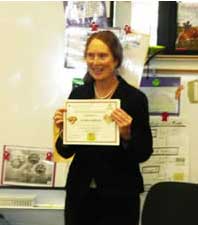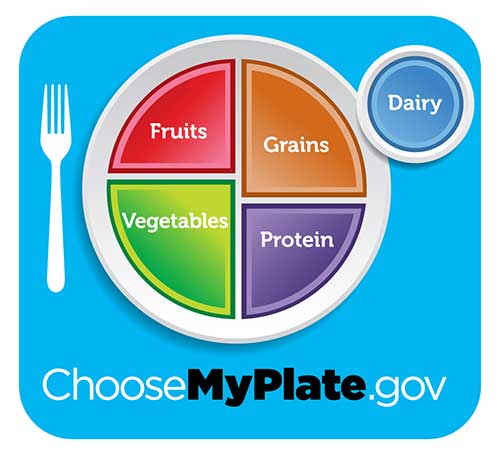
Even before she reaches the classroom, there’s a smile on her face. And why not? After all, the students call her “Mrs. Healthy!”
Brenda Carey, a UNH Cooperative Extension program associate for the Nutrition Connections program shown in the photo to the right, has been teaching third graders at the Woodland Heights School in Laconia how to make healthy food choices.
The number of overweight youth, both nationally and in New Hampshire, has increased significantly in the last few decades, a matter of serious concern given the relationship of obesity to increased risk for diabetes, heart disease, asthma, some cancers, and other chronic conditions.
The UNH Cooperative Extension Nutrition Connections program provides a series of five to six nutrition lessons for youth, targeting schools with the highest percentages of children eligible for free and reduced lunches. In 2012, the program reached more than 5,900 children throughout the state.
Back in Jennifer Douglas’s third-grade class, “Mrs. Healthy” asks for the children’s attention. They happily comply when they learn they will receive “very special certificates” they can take home with them, indicating they’ve completed a Nutrition Connections program.
But before they can receive their certificates, there’s one more lesson: making sure they can select the five food groups that are the building blocks of a healthy diet. Carey passes out a sheet with a blank dinner plate on it showing the five food groups: fruits, vegetables, grains, protein foods and dairy. Then she hands out a sheet full of stickers with food items on it.
ChooseMyPlate.gov

The blank dinner plate is based on the U.S. Department of Agriculture’s (USDA) ChooseMyPlate.gov, a website to help Americans build healthier diets based on USDA’s new food guidance icon, MyPlate.
As the students get ready to “stick” the right food on the MyPlate dinner plate, Carey reminds them about “red light” foods that won’t make it onto the plate, at least not every day. Each student takes a turn putting a food sticker in the right place on the MyPlate diagram, and it’s apparent they’ve learned a lot from “Mrs. Healthy.” When asked how many fruits and vegetables they should eat, one boy calls out, “four cups!”
There’s a little hesitation when it comes to the fish sticks; Carey asks the students if fish sticks are protein. She says the “fish” part of the sticks is protein, but they could be breaded and fatty, so they shouldn’t be an everyday food.
Over the course of the classes, Carey has taught the importance of making smart choices from every food group, making physical activity a part of daily life, and practicing food safety as it relates to food handling.
And when she told them popcorn is a wonderful whole grain food (minus too much butter and salt) there was a huge round of applause.
Originally published by:
Written by Holly Young





















































